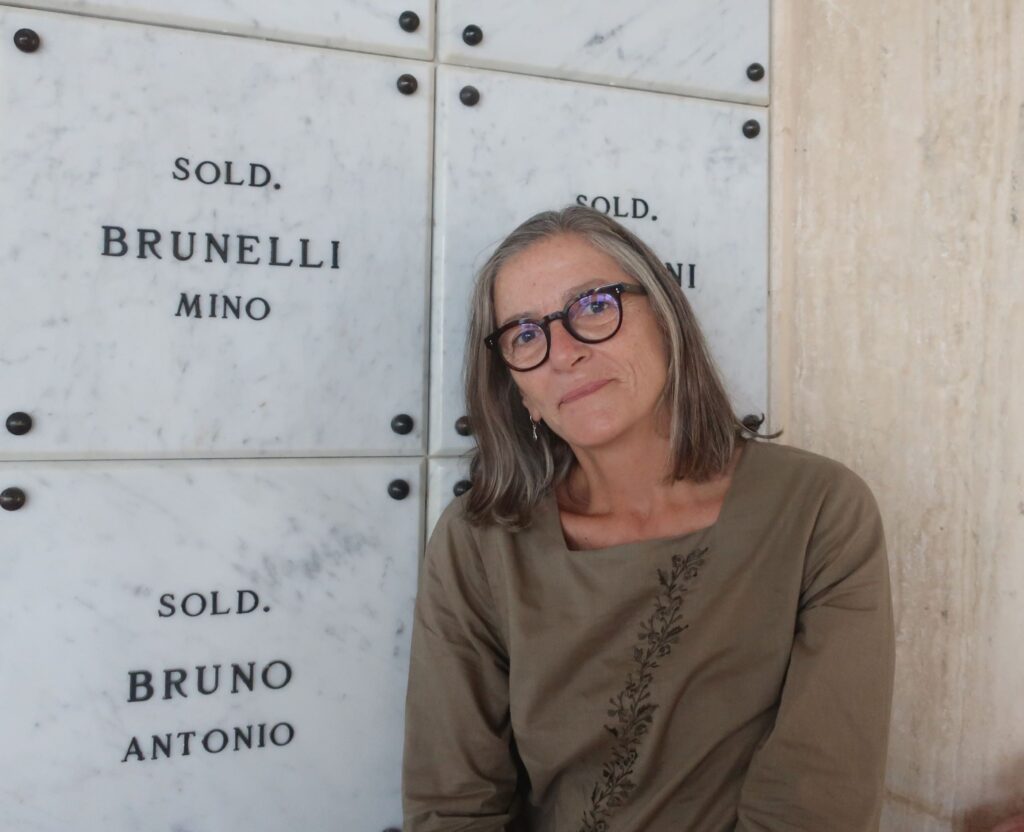That is, the two of us. We arrive in Alexandria from Dubai with a plan to spend a month in Egypt.
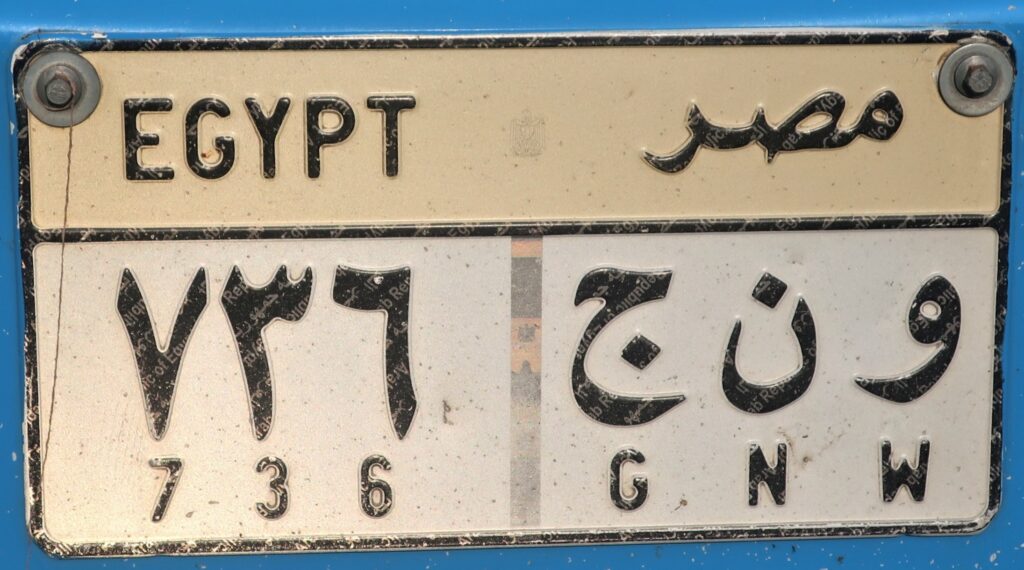
The first thing that happens: our binoculars are confiscated! Apparently, they have ‘military applications’. I pity any birdwatching groups entering the country with their expensive binos.
We decide to treat ourselves to a stay at the historic Cecil Hotel. The location is great.
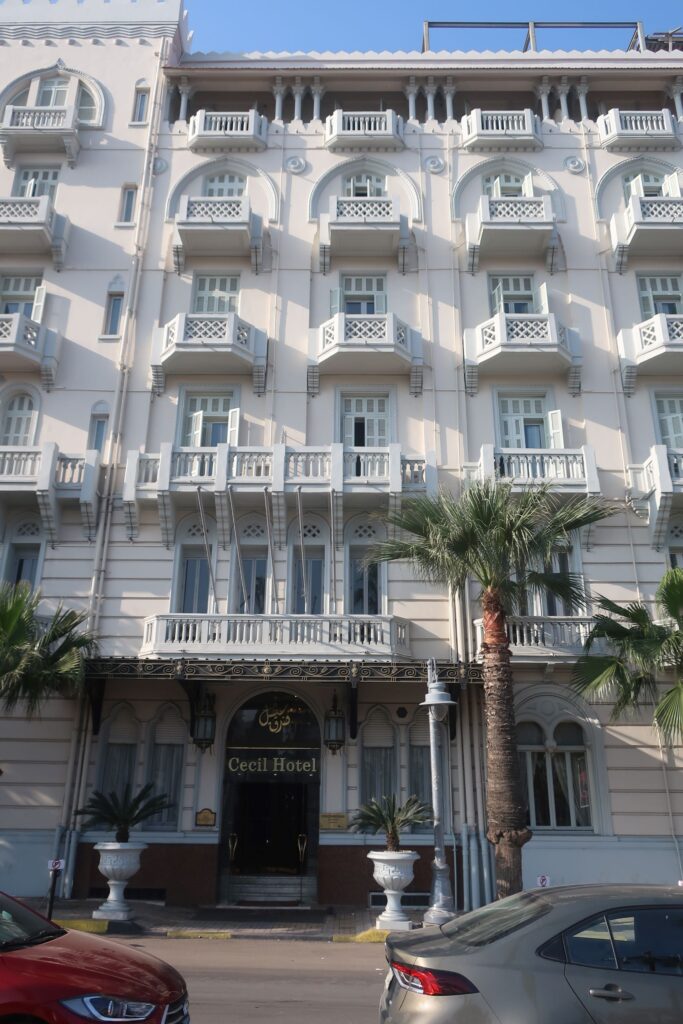
Our hotel is right on the corniche. Modern Alexandria is all about this sea-facing promenade.

It’s lined with bustling cafés and crowds of people day and night.
A pair of Alexandrians find a spot to enjoy the evening.
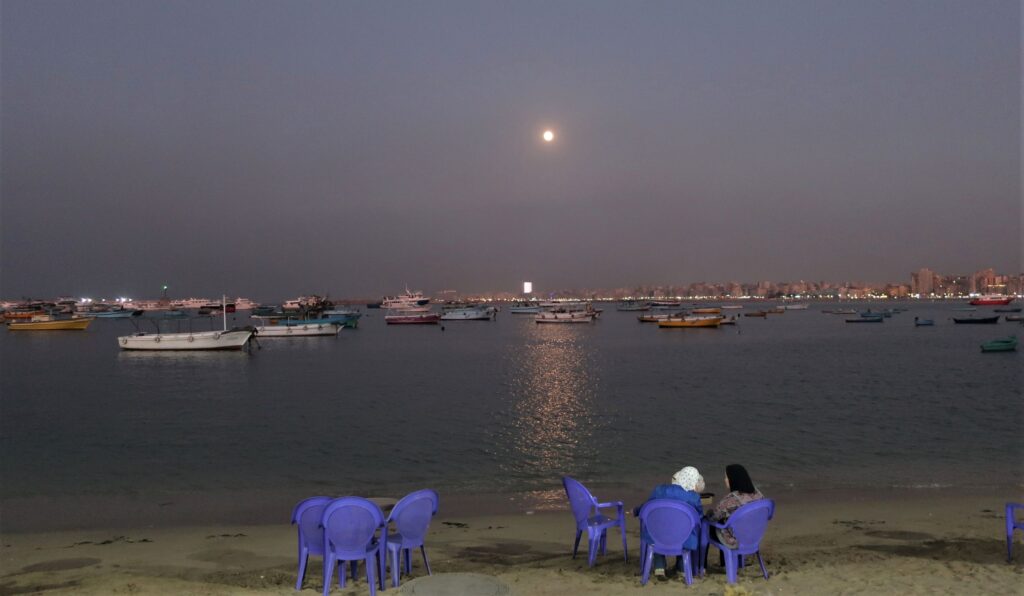
So does this cat.
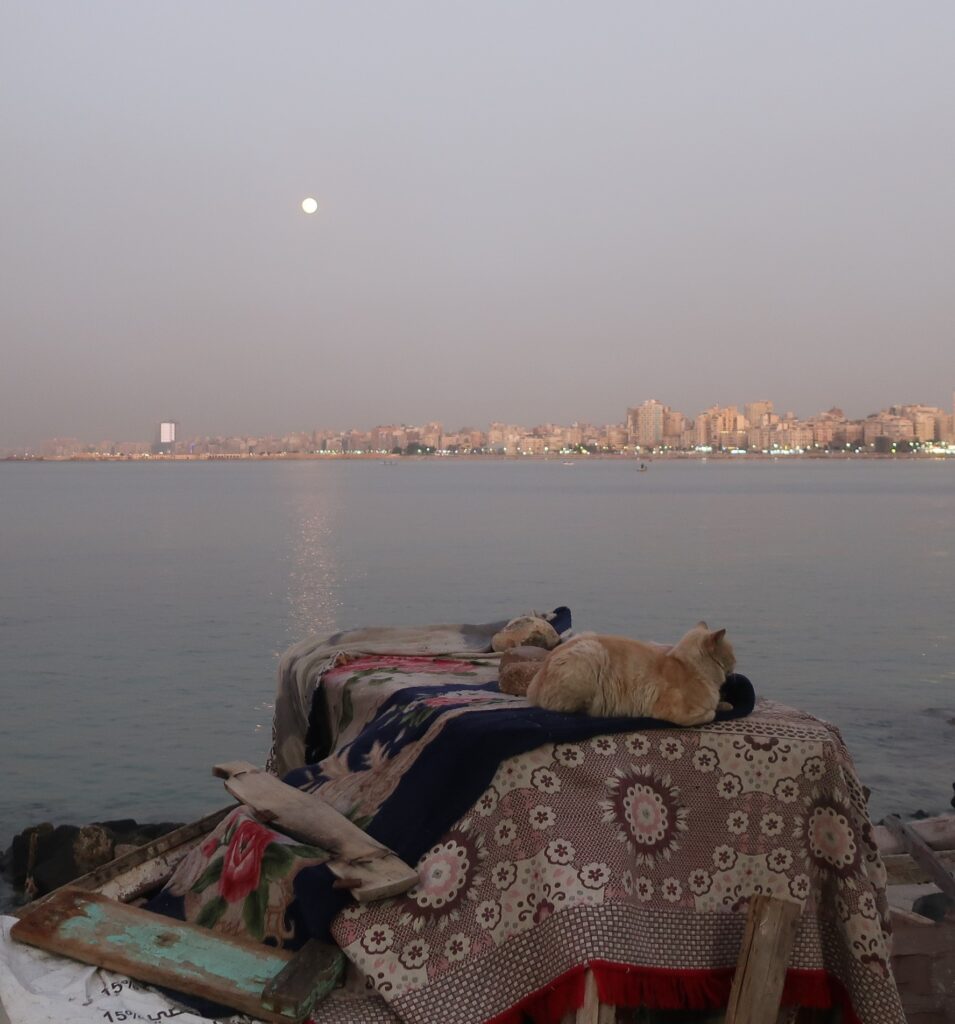
Our hotel is ideally situated for exploring the city.
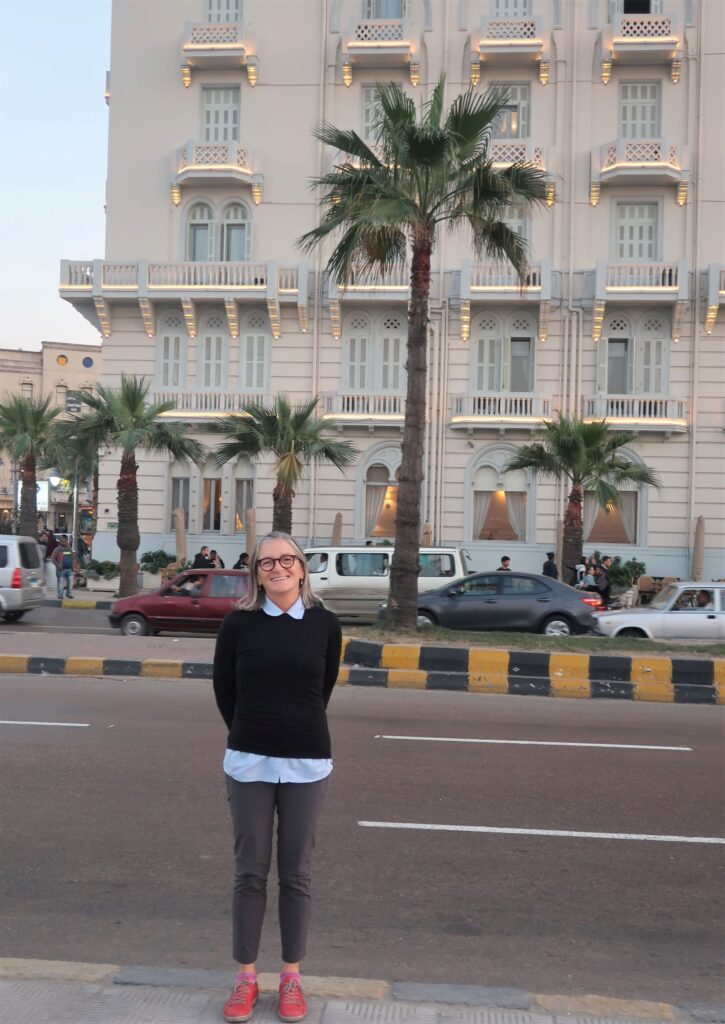
Alexandria, of course, is famous for its great library of antiquity. It has an aspirational modern counterpart in the Bibliotheca Alexandrina.
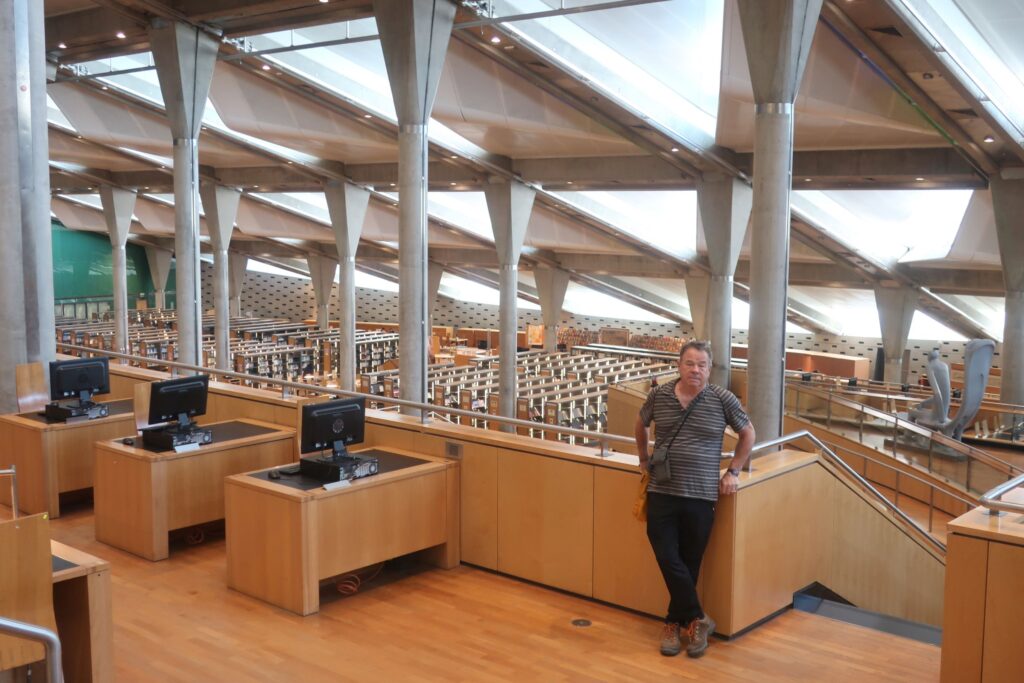
It’s a magnet for bibliophiles.
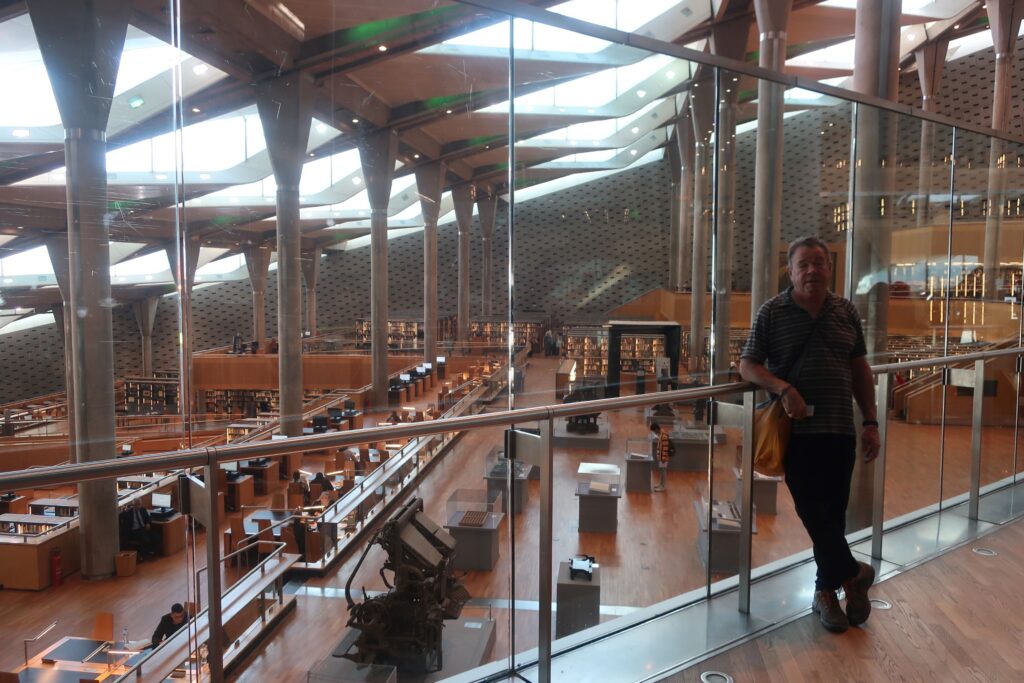
Not surprising to see that most of the users are female. Intelligence will be how women advance in these countries.
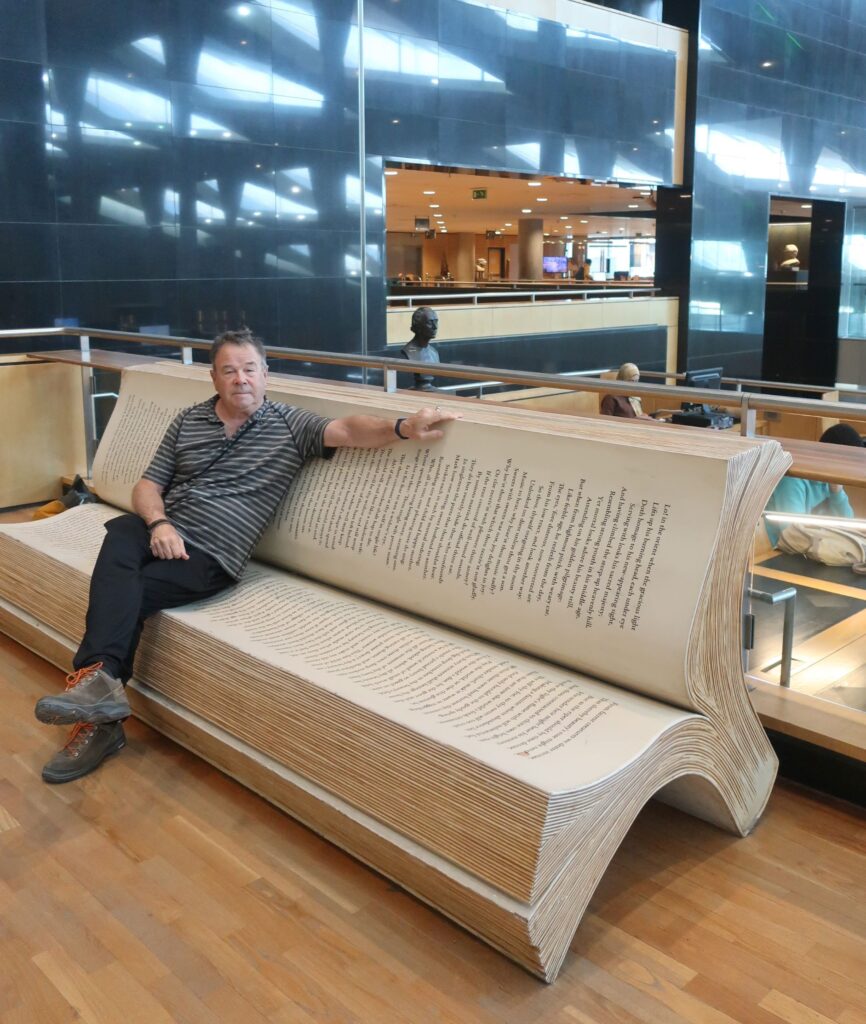
We visit the catacombs. (Even though they are one of the premier tourist attractions here, our Uber driver spends half an hour circling aimlessly. We get to see some interesting parts of Alexandria, so that’s OK.)
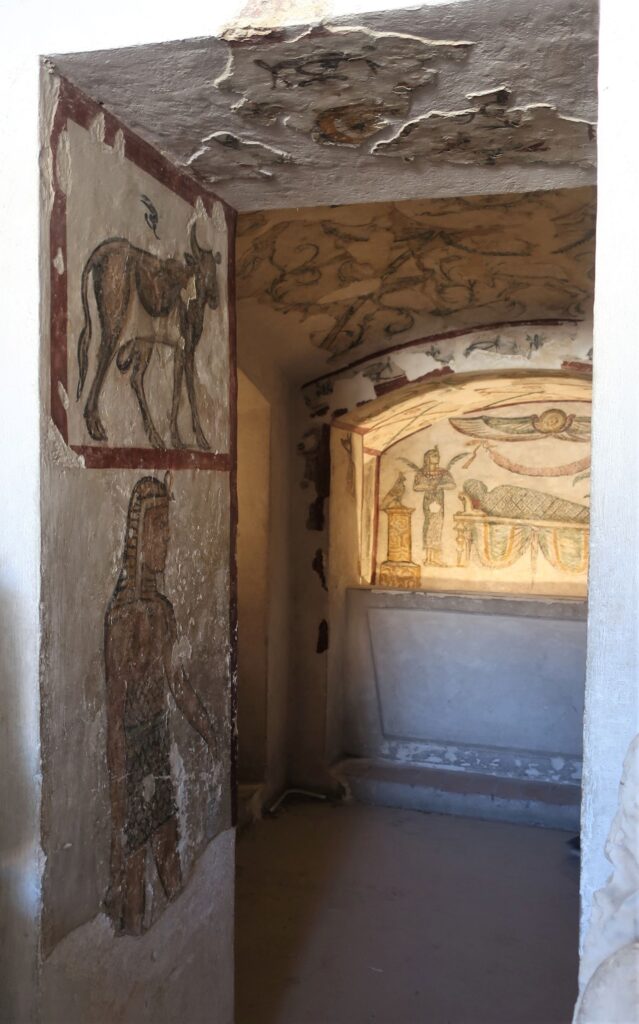
Built in the Greco-Roman era, they’re deep. And Labyrinthine.
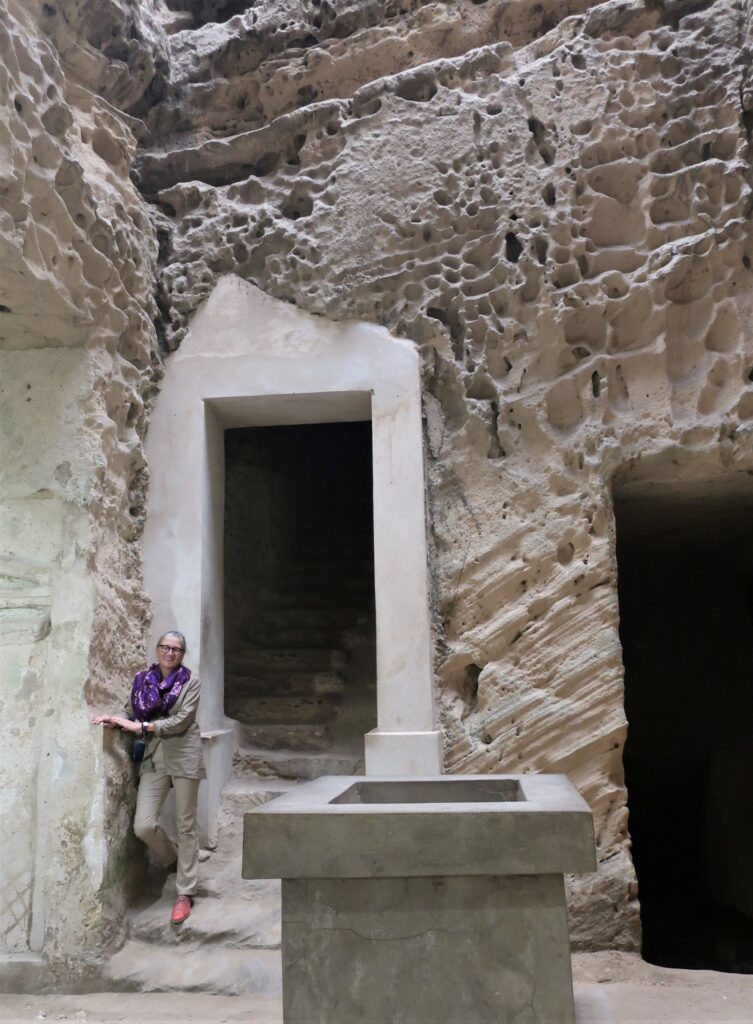
There are fancier tombs for the well-off.
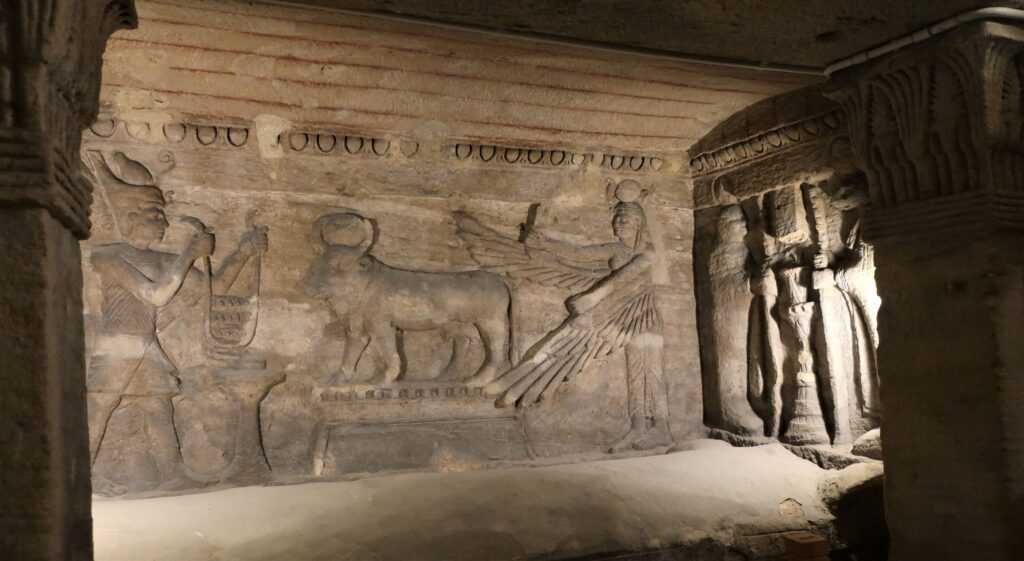
And for the humble people, a simple niche.
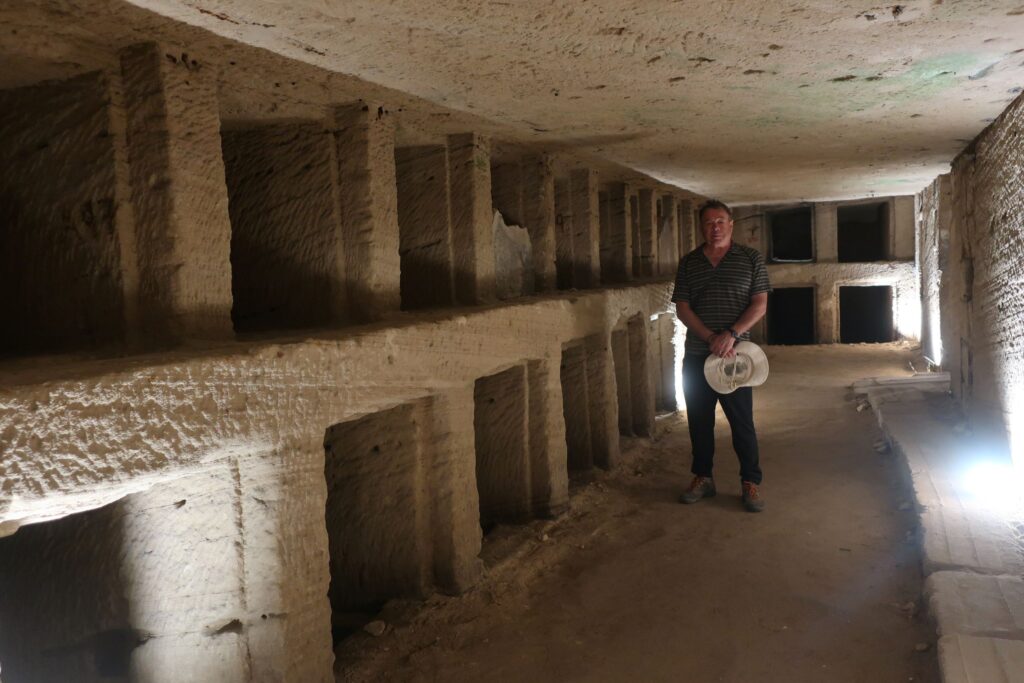
Like many artifacts of the time, there is an interesting blend of ancient Egyptian and contemporary Hellenistic styles in everything.
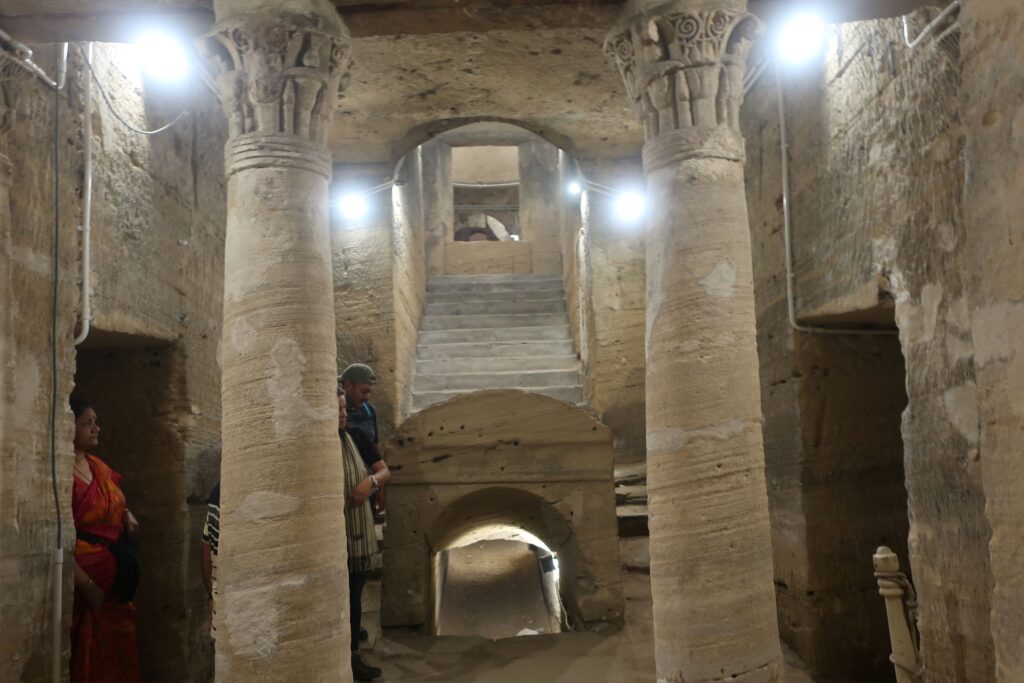
We visit the Alexandria National Museum. It’s in the former US consulate.
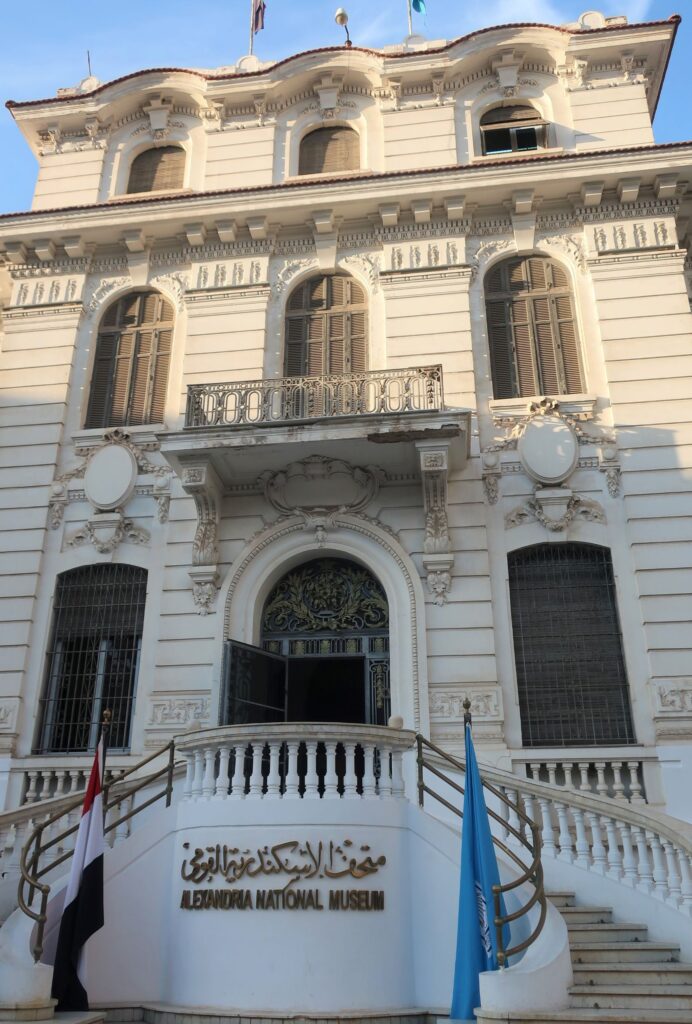
Alexandria was once full of these elegant Italianate buildings. After Nasser kicked out the numerous cosmopolitan residents – Italians, Greeks, Armenians, French, Jews, etc. – in a fit of strident Arab nationalism, large parts of Alex fell into decay.
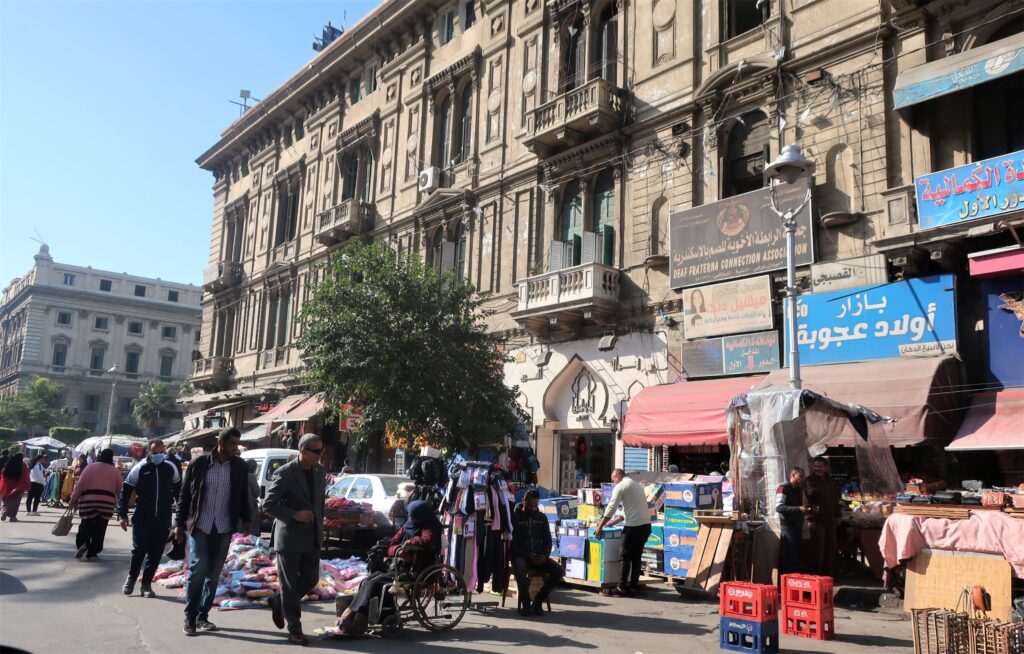
Now the streets are crowded with people trying to make a living. The economy of Egypt doesn’t exactly run at peak efficiency.
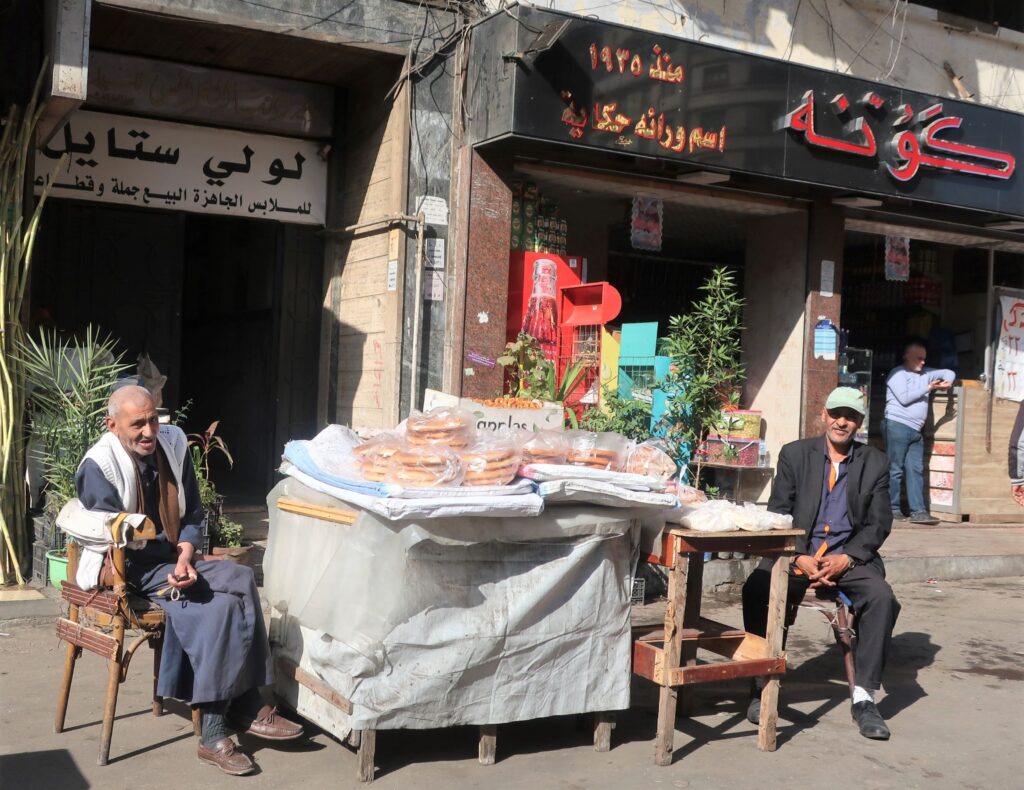
So far, people have been friendly here, as long as you are not being specifically targeted for some scam or other.
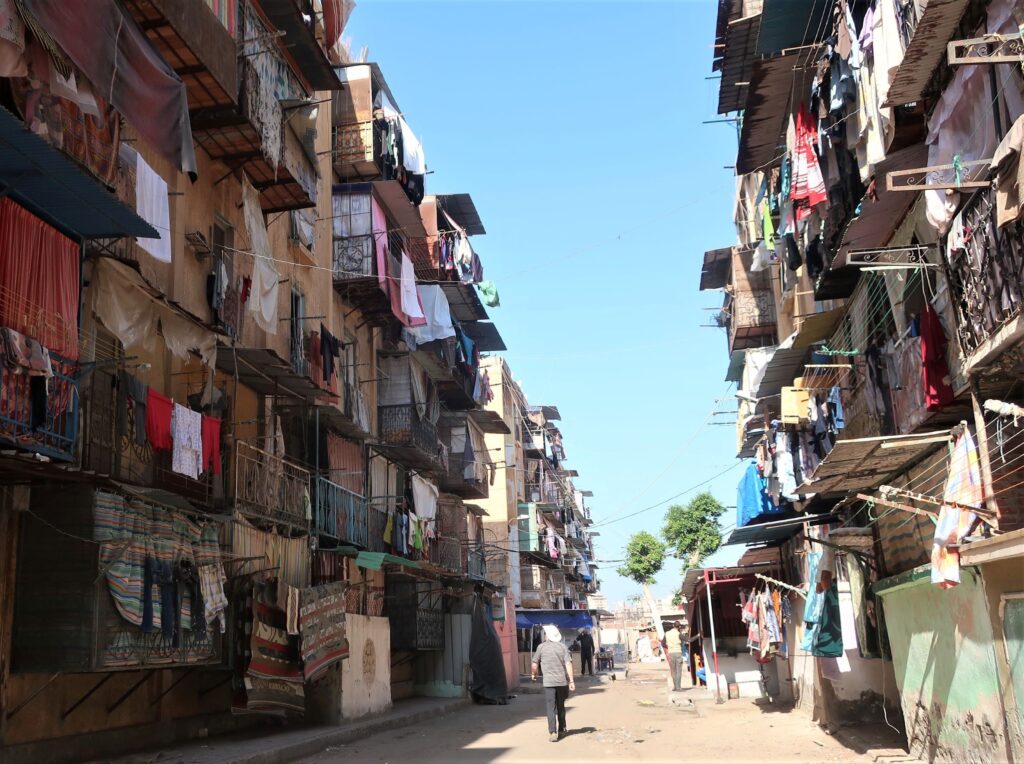
There is a lively market going on in the narrow alleys surrounding Pompey’s Pillar.
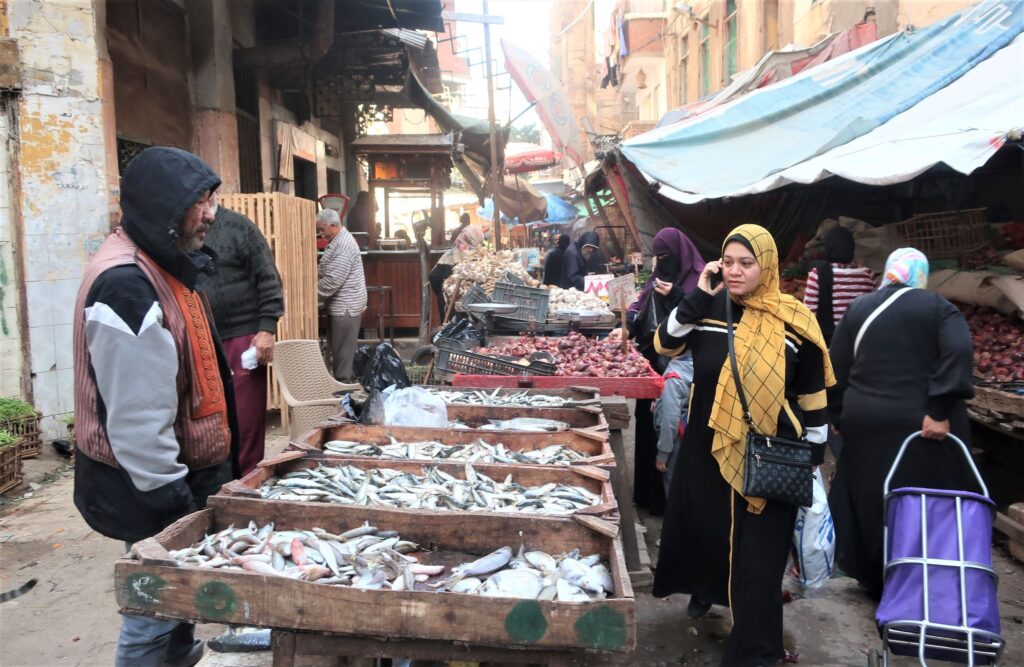
Many Egyptians, like most non-Western people, are cruel to dogs. But Egyptians are kind to cats. We wonder if this is a holdover from the cat worship of the their ancestors.
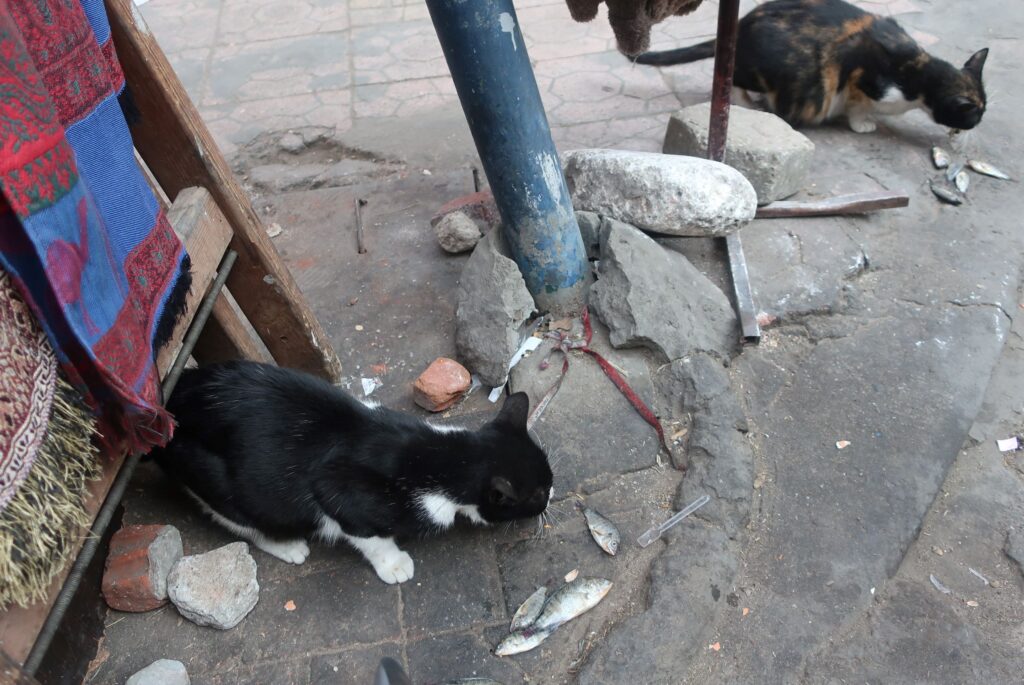
Under what was formerly known as Kom el-Dikka (that is, ‘hill of rubble’), archeologists have excavated a prosperous Roman neighborhood.
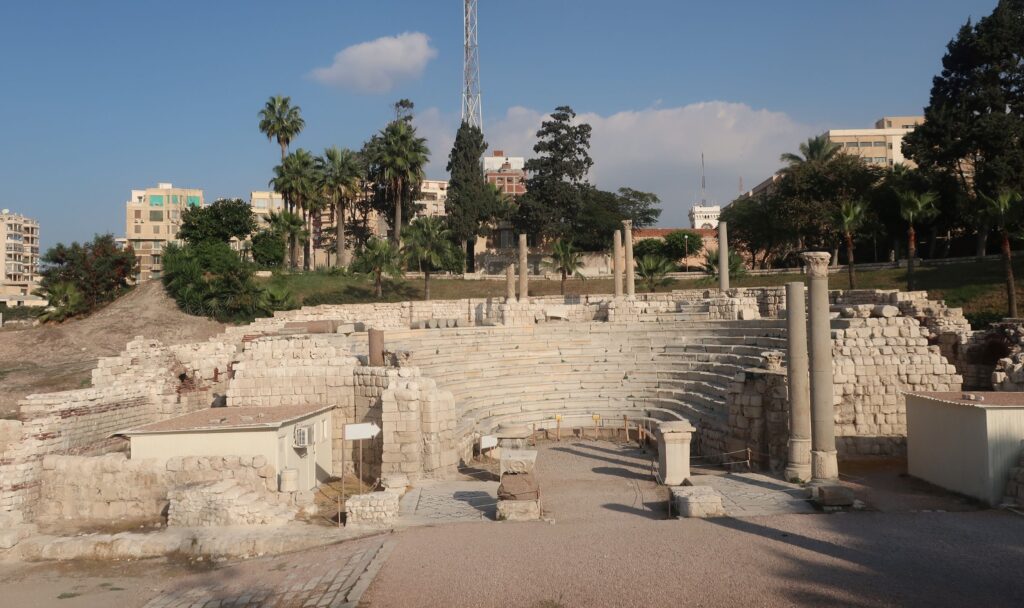
This is some ancient graffiti done by the supporter of a chariot-race champion, according to the explanatory plaque.
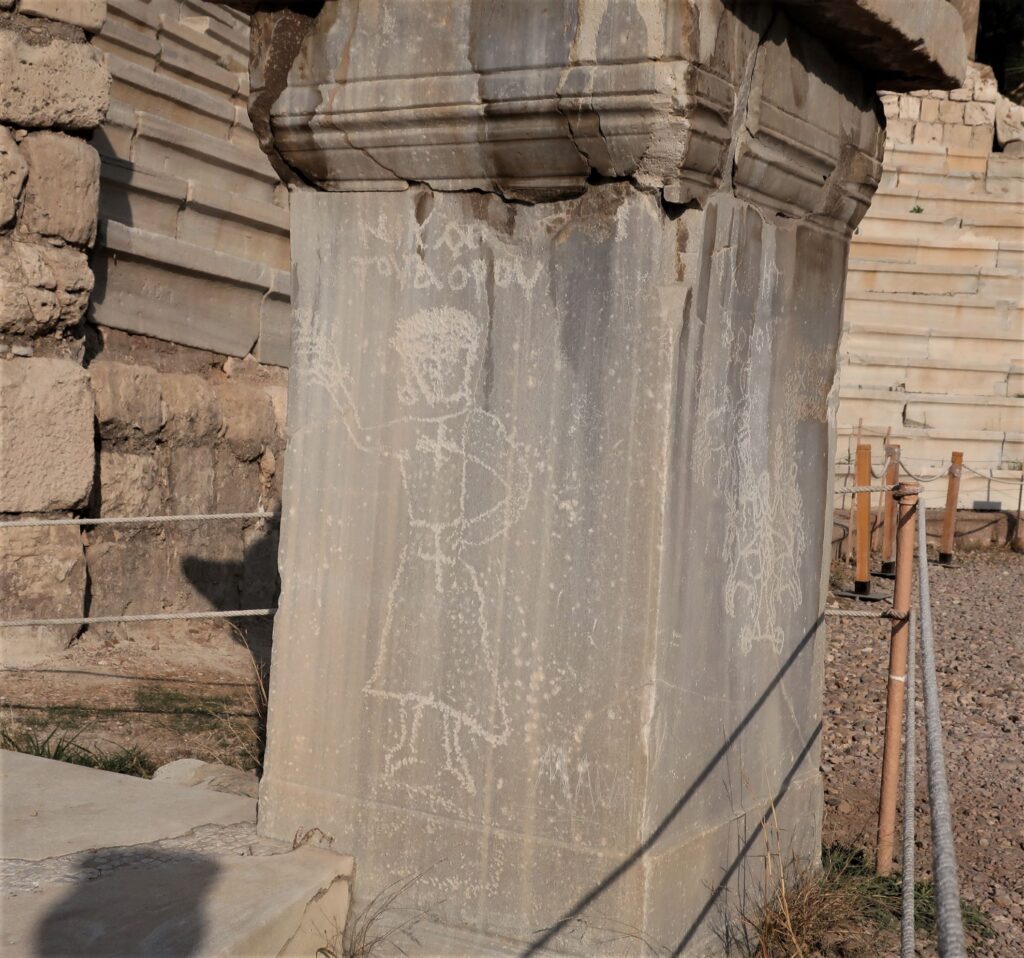
In the ruins of a nearby villa are some impressive mosaics, including this one of a parrot.
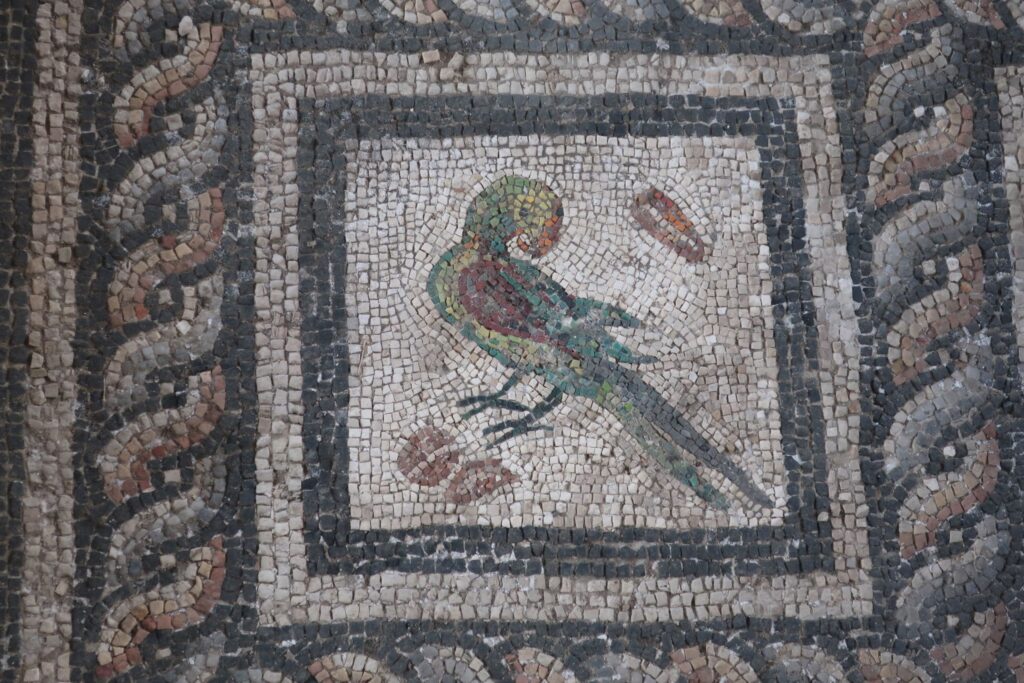
We visit Pompey’s Pillar, in what was the Serapeum of Alexandria in ancient times.
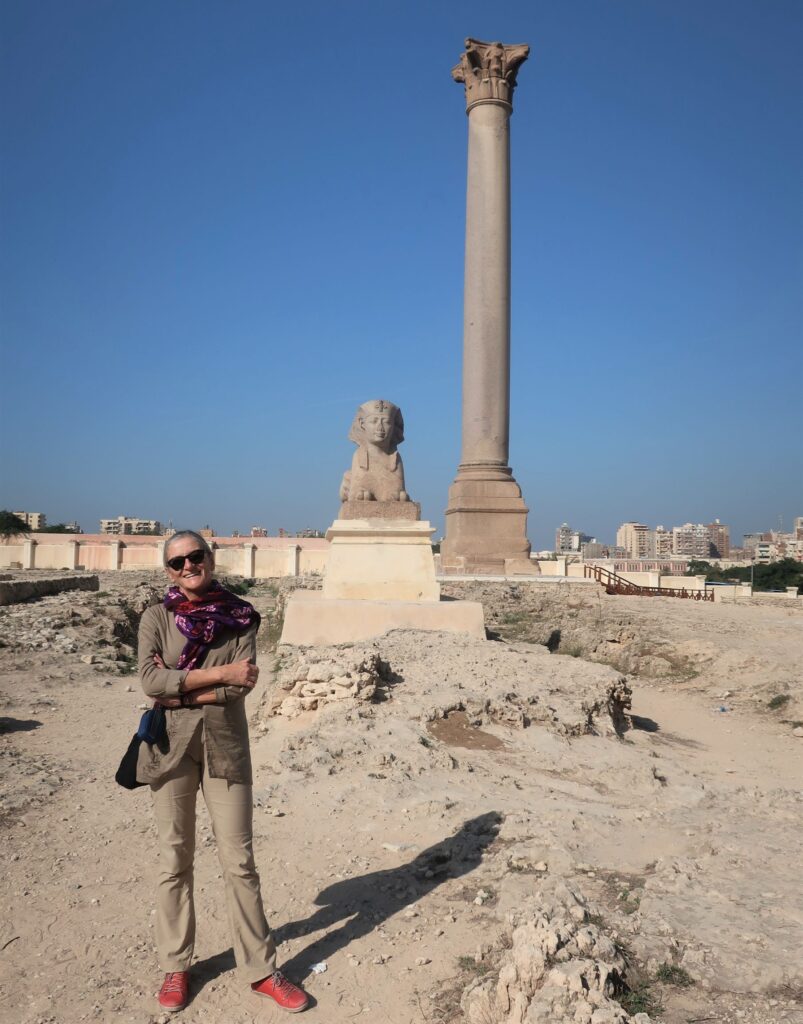
The pillar is all that’s left of a complex that used to look like this:
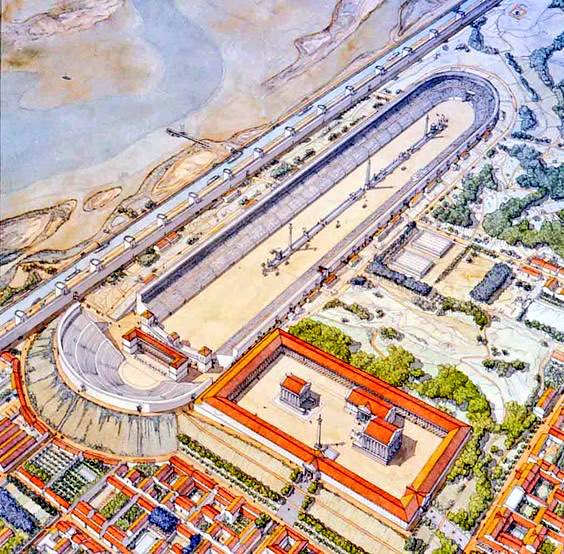
The Serapeum was also a branch of the famous Library, where anyone could borrow a scroll or two.
One day, we hire a car and driver to visit the area of the Battle of El Alamein. The military museum has some fairly interesting exhibits inside and lots of military equipment salvaged from the desert outside.
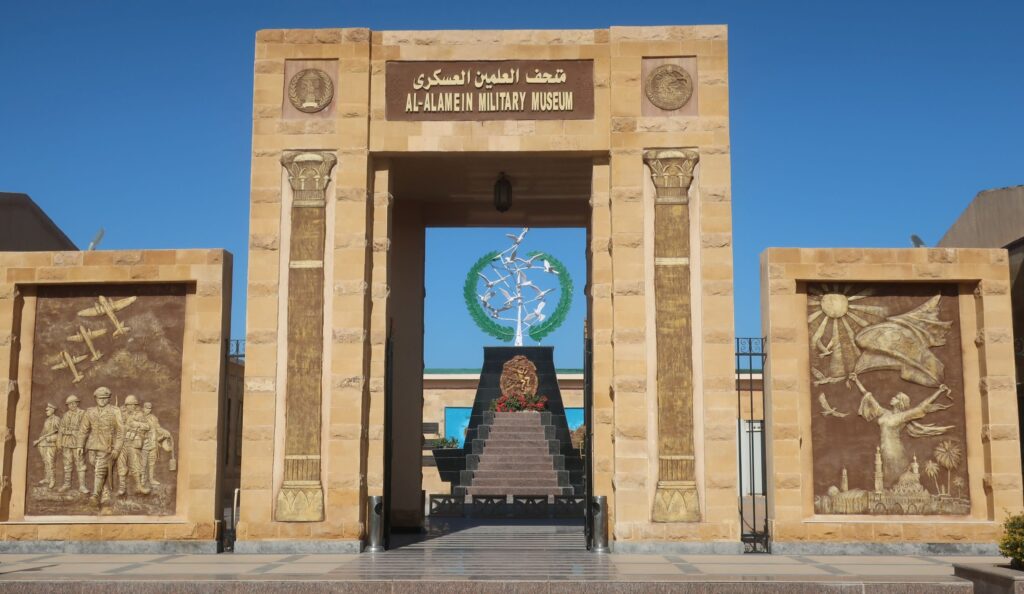
Winston Churchill had this to say:
“Before Alamein we never had a victory. After Alamein, we never had a defeat.”
We like to pay our respects at Commonwealth War Graves whenever we come across one. No matter how squalid the country they’re in, they are always impeccably clean.
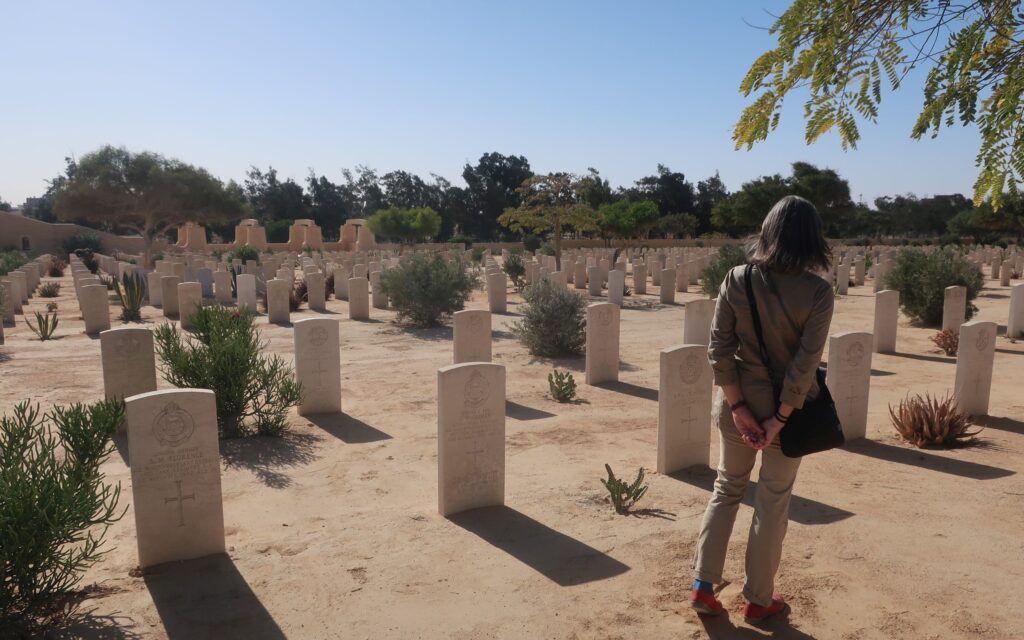
We find at least one Canadian among the numerous British, Australians, New Zealanders, and South Africans.
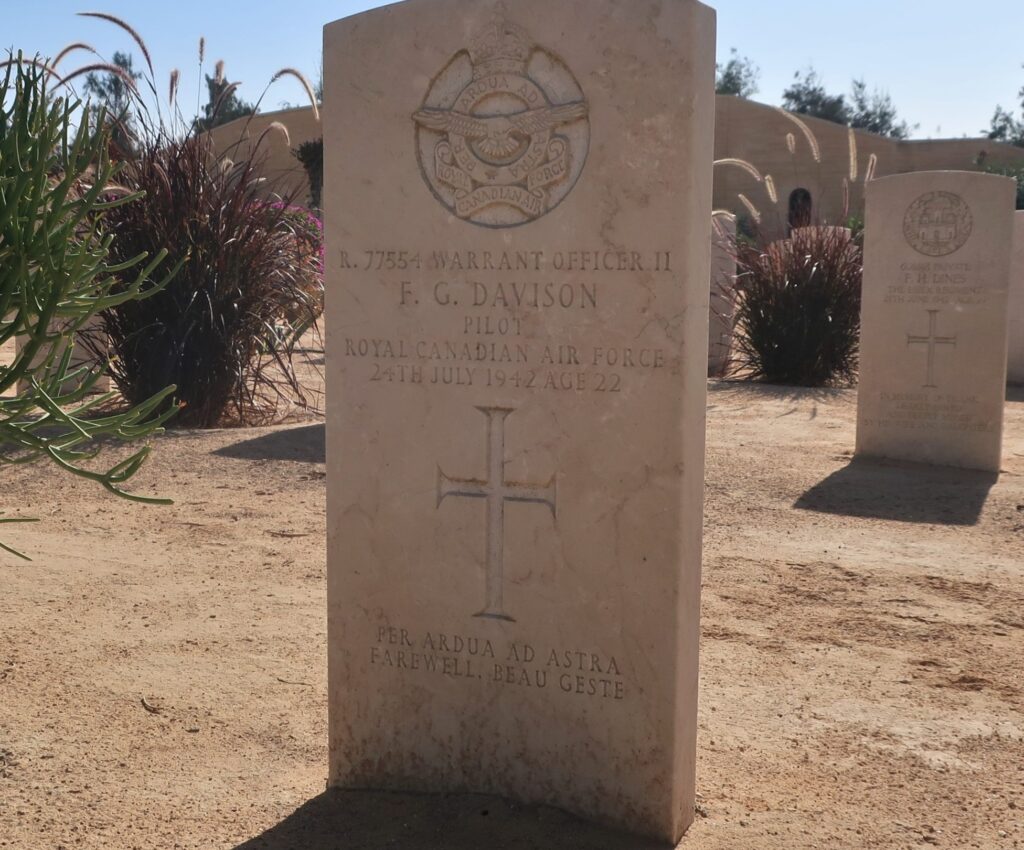
It’s a shame that so many young men from around the world came to this distant wilderness to die defending Egypt from a dictatorial torturing warmonger like Hitler, only to have a like-minded dictatorial torturing warmonger like Nasser take over the country less than a decade later.
Because they’re in the same vicinity, we also visit the memorials of the Italians and the Germans. The Italian one is stylish.
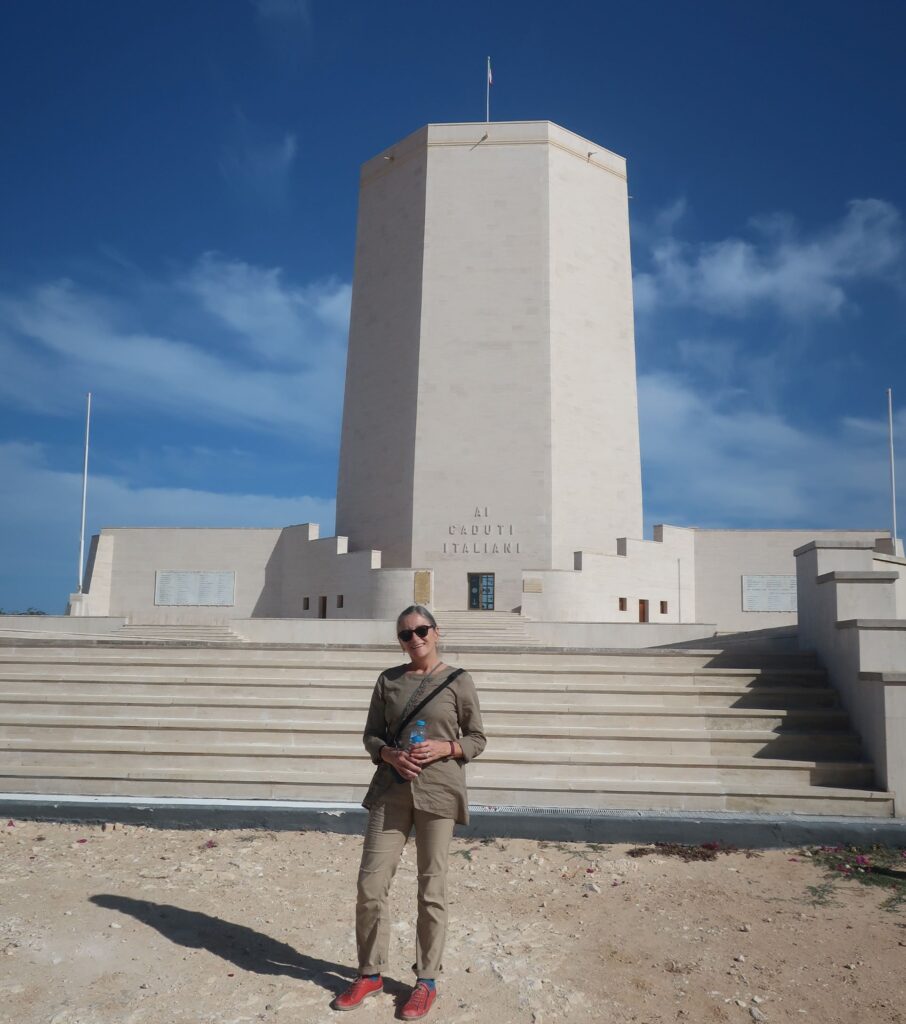
The German one is austere.
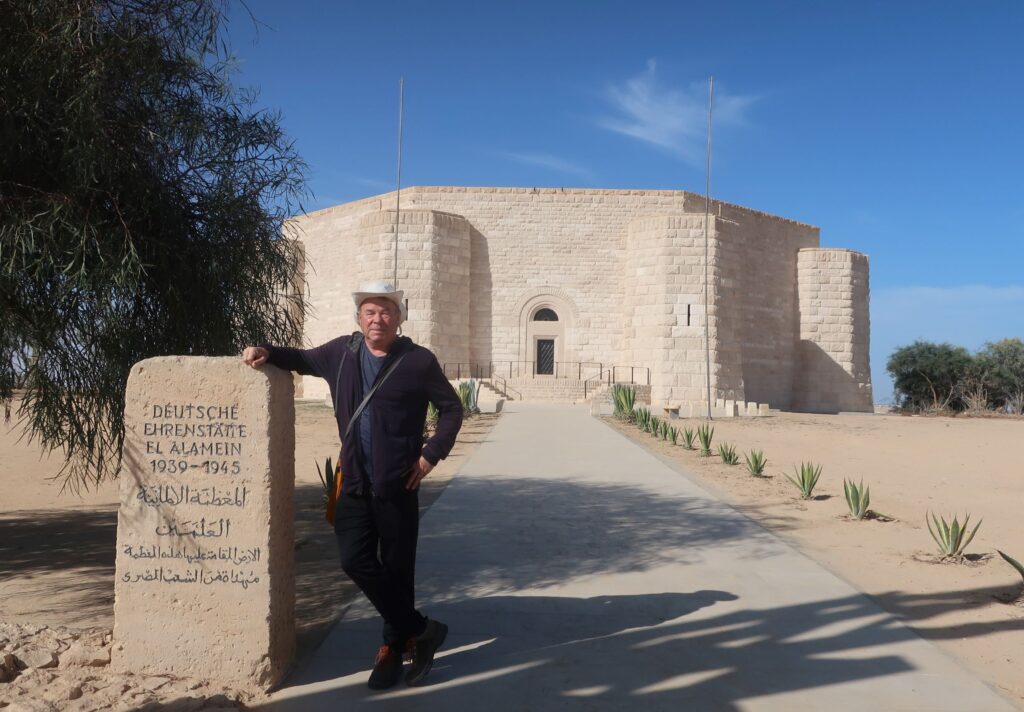
The time comes to take the train to Cairo. The train station is just a few blocks from our hotel.
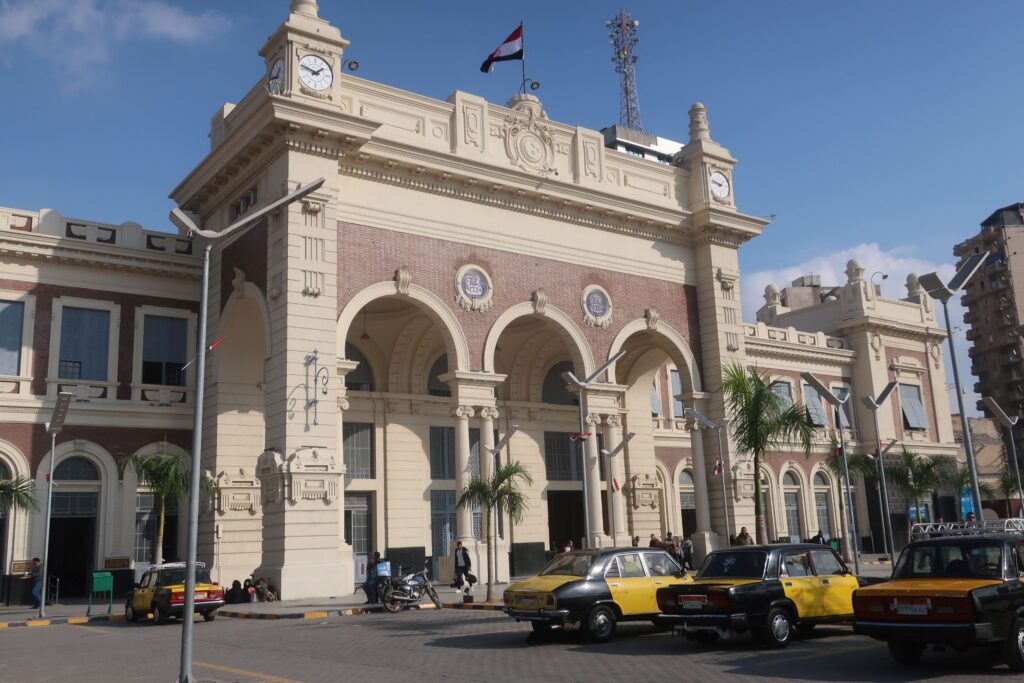
The journey takes about two and a half hours. Our car is air conditioned, but kind of grotty.
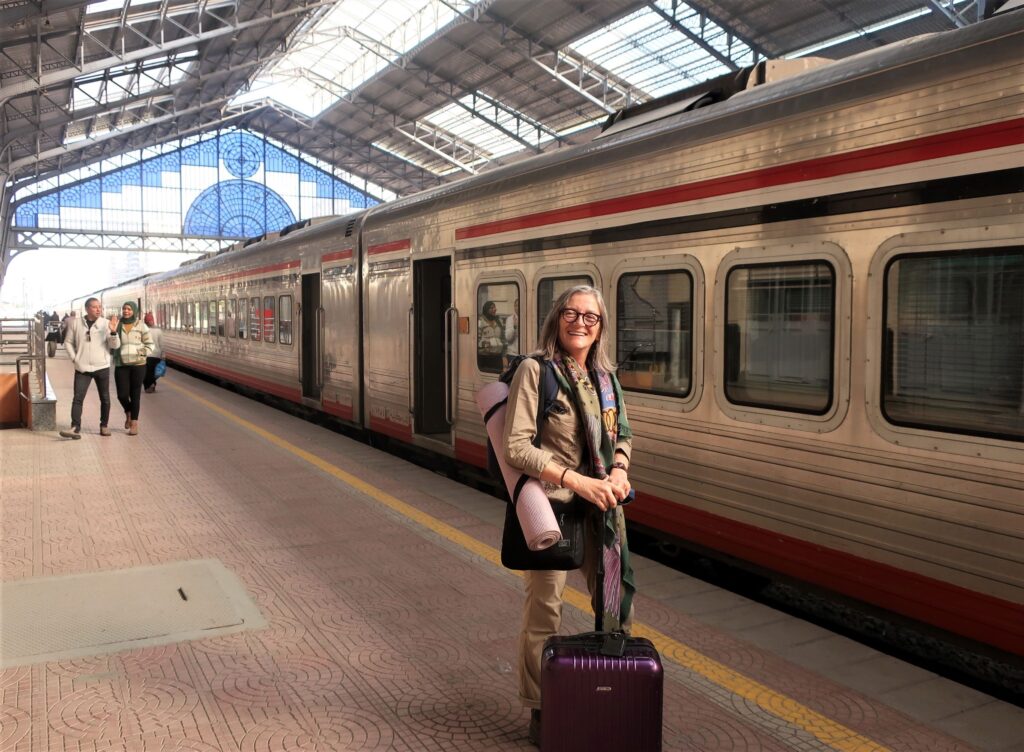
Sight or Insight of the Day
In the Italian war memorial, we come across the remains of a soldier with the same surname as Maria.
